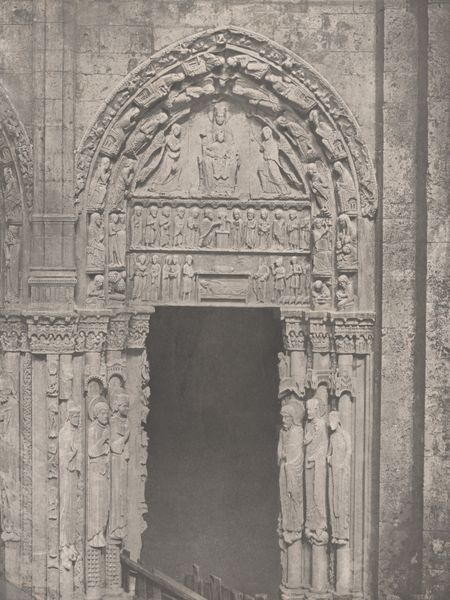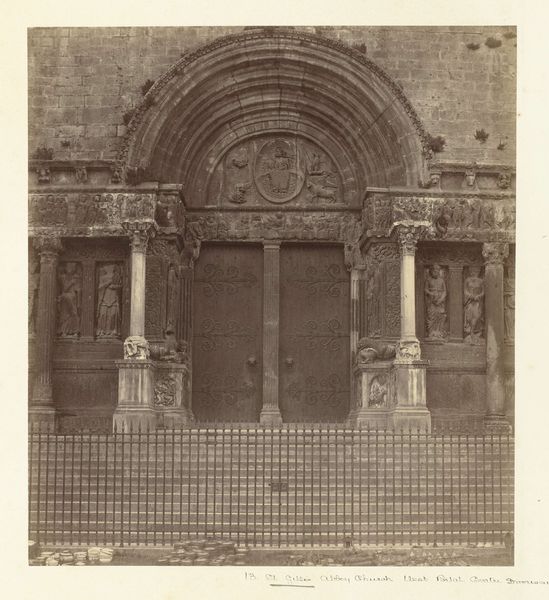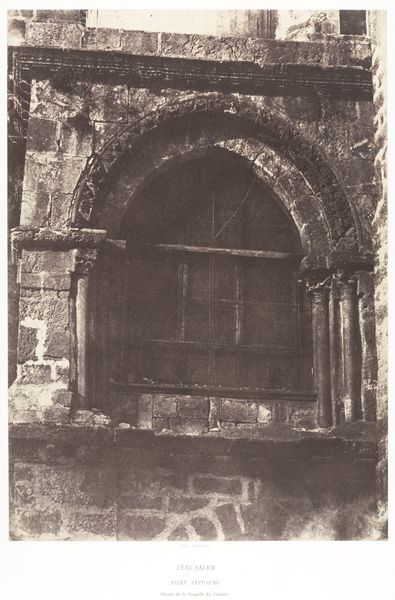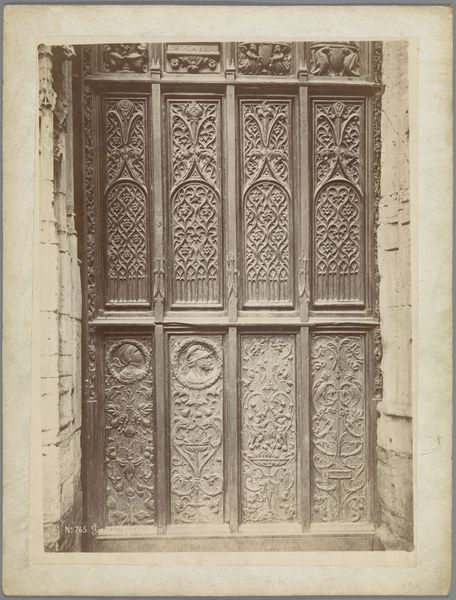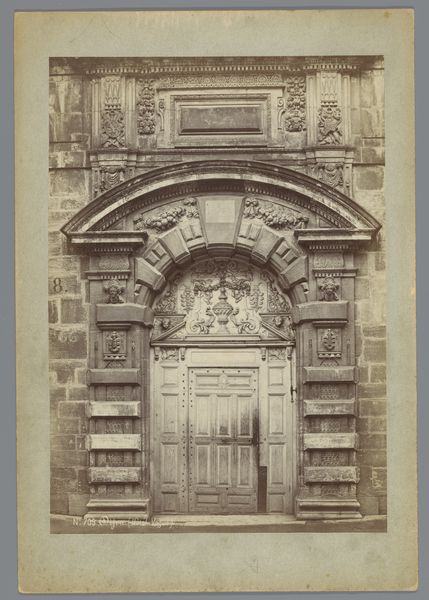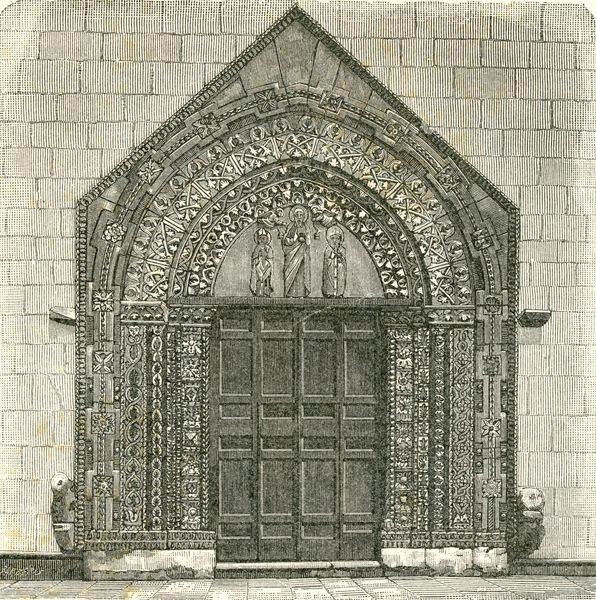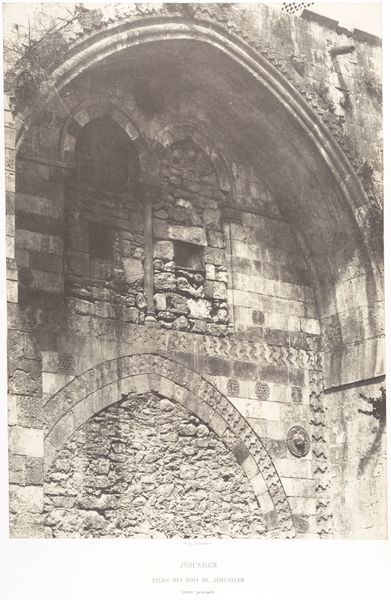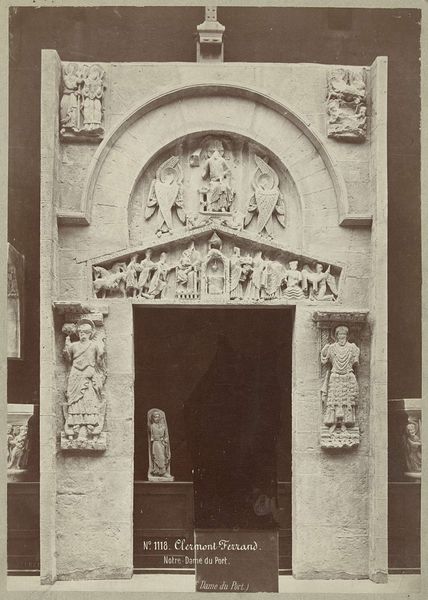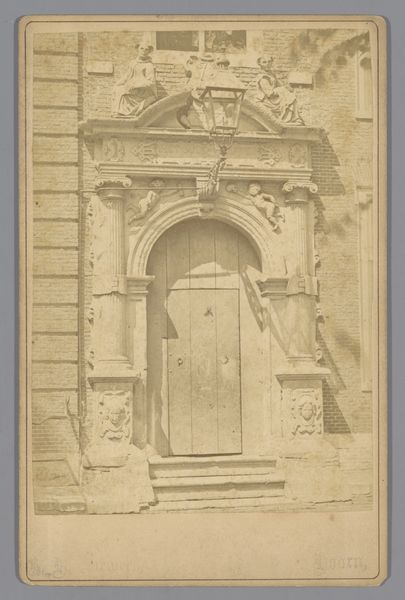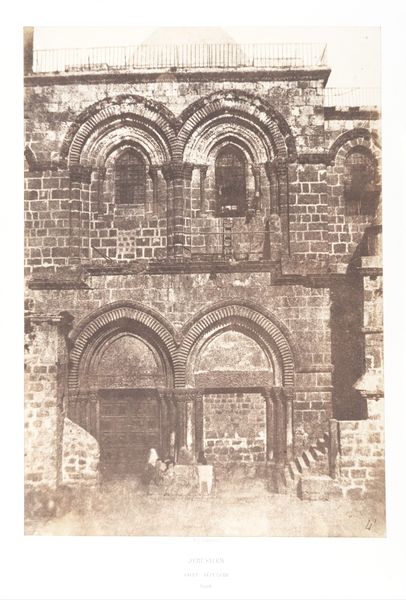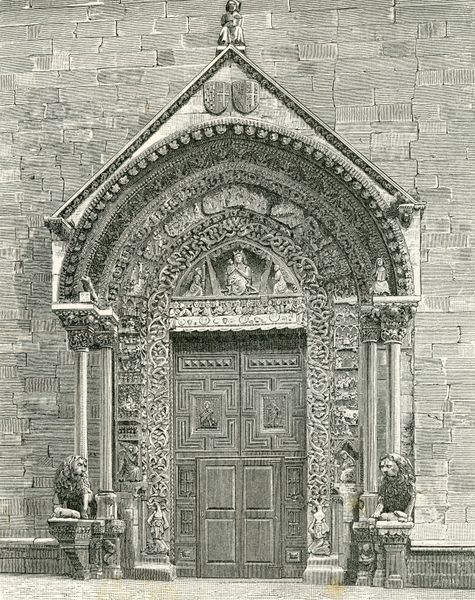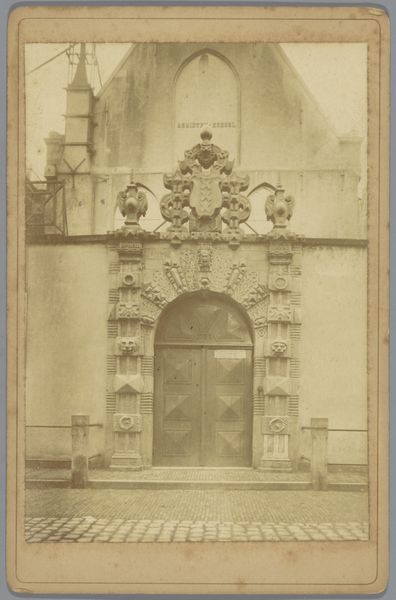
print, photography, architecture
# print
#
sculpture
#
landscape
#
photography
#
geometric
#
academic-art
#
architecture
#
realism
Dimensions: height 225 mm, width 155 mm
Copyright: Rijks Museum: Open Domain
Editor: This photograph from 1897 by Hauser y Menet, captures the Portal of the Palace of Pedro Suárez de Toledo y Ayala in Toledo. It's quite imposing, isn’t it? Almost fortress-like. What can you tell me about this image? Curator: It's interesting to consider this image within the context of late 19th-century Spain, a period marked by both nostalgia for its imperial past and anxieties about modernization. What narratives about power and identity do you think the architecture, captured here, attempts to construct or uphold? Consider, who has access to this space, and conversely, who is excluded. Editor: I see what you mean. It seems to be suggesting power and permanence through the elaborate carvings and the sheer size of the portal. The shields, for example, seem to signify nobility and legacy. But also, it does feel like a constructed image of power. Do you think it invites or repels? Curator: Precisely! The strategic composition reinforces the dominance and lineage of the elite, freezing a particular social order in time. How does this image serve the architects or patrons? Think about the political climate then, and consider whether it could have served as a reminder of tradition and social stratification amid rising social unrest. Does the lack of human presence intensify that feeling for you? Editor: That's a great point. Without any people in the shot, it feels almost like a monument to itself, emphasizing an idealized past rather than a lived reality. It makes me wonder how much this portal might have visually contributed to, or pushed back against, the political currents of the time. Curator: Exactly! And that tension – between idealized representation and the realities of power, class, and access – is precisely what makes this photograph a potent visual document. It tells us so much about how social hierarchies were not only maintained but also visually reinforced through architecture and its representation. Editor: Thank you; it’s made me think a lot more about how architectural images work in culture.
Comments
No comments
Be the first to comment and join the conversation on the ultimate creative platform.
